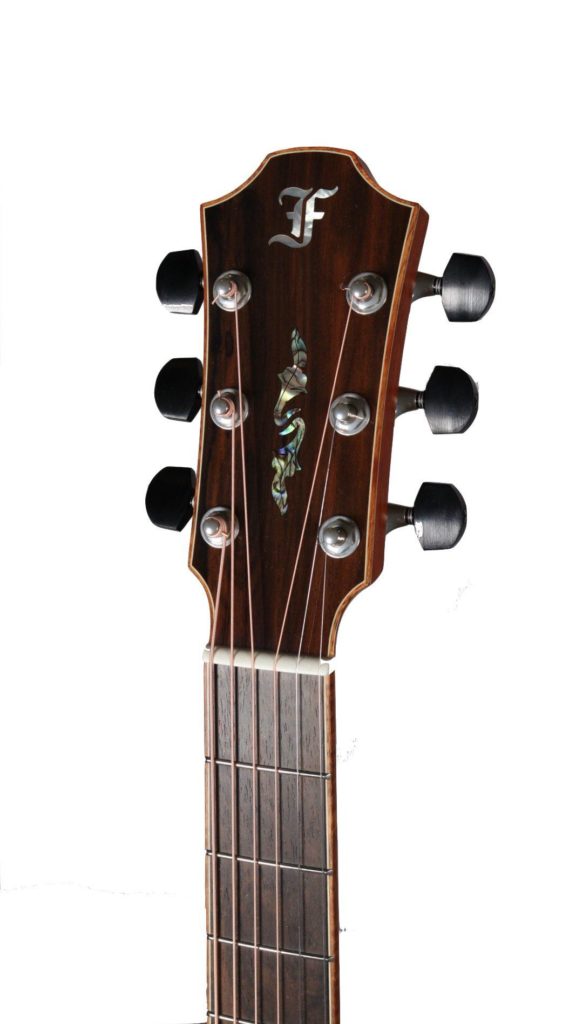This Christmas I received a most beautiful and thoughtful gift from my significant other: a Furch Red Master’s Choice Gc-SR acoustic guitar with an LR Baggs Stagepro Anthem pickup. Aside from its gorgeous design (check out those mother-of-pearl inlays), the guitar has many unique qualities that set it apart.
The soundboard is made from Sitka spruce, a tonewood that gives it a bright and open sound. On most acoustic guitars, the soundboard’s thickness is typically uniform in measurement, however, wood is a natural material so the density can vary in different sections. Furch accounts for this by sanding down certain spots in order to meticulously tune for a balanced sound. The Indian rosewood backplate is also individually tuned to ensure the best tone possible.
The neck is constructed using Furch’s proprietary CNR (Composite Neck Reinforcement) System neck design, which houses the adjustable truss rod in carbon that allows the neck to stay in position much longer than those with standard neck joint designs.
The guitar is finished with an ultra-thin, highly-resistant lacquer that allows for the wood’s tonal qualities to shine through while also providing protection.
The aforementioned features make this guitar a phenomenal instrument fit for the most discerning players, but it’s the history behind Furch guitars that makes me exceedingly proud to own one.
In the 1970s, a metalworker and musician named Frantisek Furch had zero access to high-quality musical instruments in the then socialist Czechoslovakia. It was complicated and expensive to import an instrument from overseas so he employed his metalworking skills and made his first banjo from an old drum. He made his first acoustic guitar a few years later with a spruce top plate from an old piano. Musicians noticed and praised his instruments, prompting them to commission guitars from him.
The communist regime at that time prohibited any private entrepreneurial activity, but Frantisek’s passion could not be thwarted. At great risk, Frantisek defied the authorities and set up a one-man garage-based factory in 1981 to produce his guitars bearing the “F” trademark, which still adorn his guitars today.
During that time, Frantisek made about 100 guitars, including mandolins. His exceptional work earned him a reputation as a top tier guitar builder on the Czech music scene. Despite restrictions imposed by the former regime, Frantisek’s guitar manufacturing business flourished.
In 1989, the Velvet Revolution brought the collapse of communism in Czechoslovakia, finally giving Frantisek the freedom to pursue his passion unencumbered. In 1990, the guitar making shop was moved from the garage of the Furch family home to a factory workshop of some 20 square meters, and Frantisek hired his first employee. The rest is history.
Out with communism and in with freedom and badass guitars!




